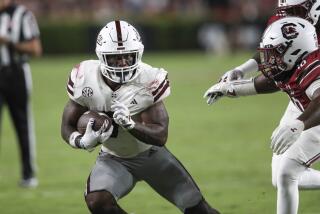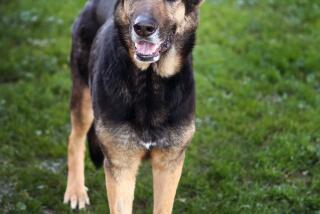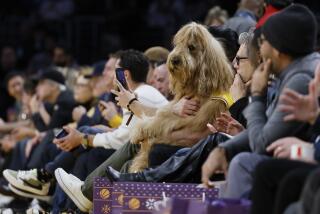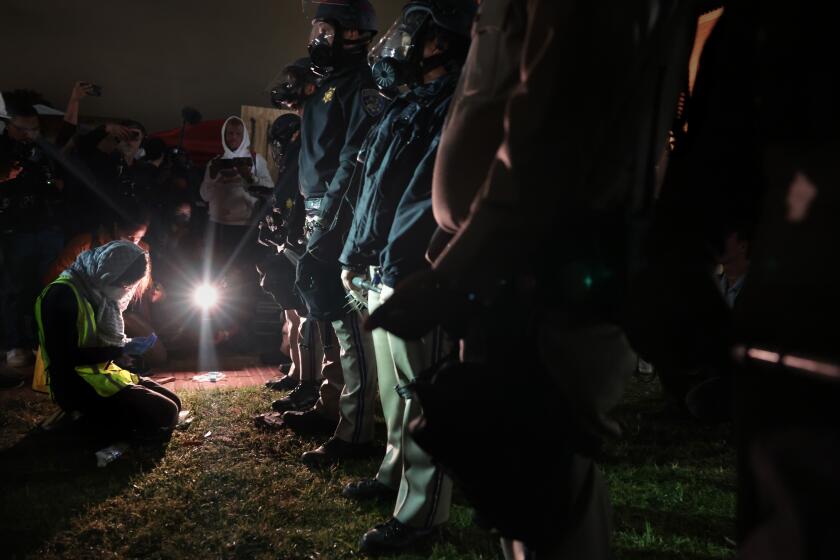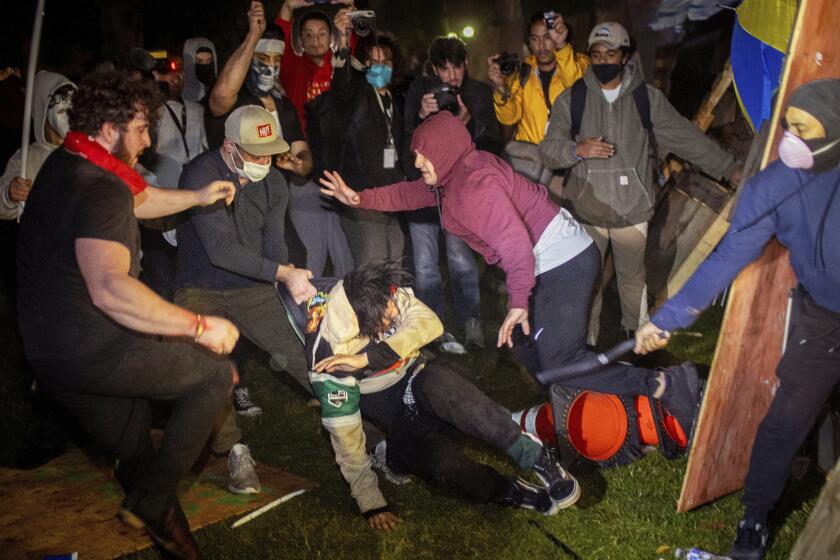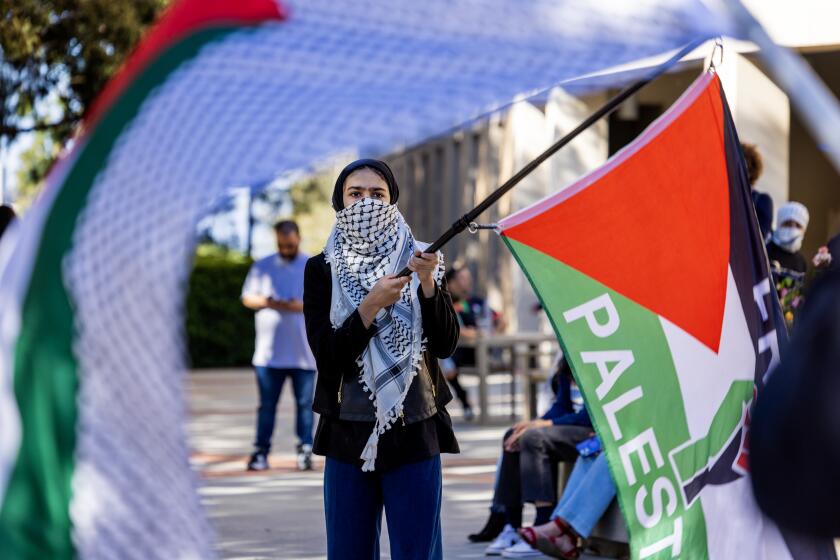Victor E. Bulldog III continues the animal magnetism as Fresno State’s mascot
The search for Fresno State University’s newest, most prominent figurehead was rigorous, involving a fact-finding committee, photos, video, dozens of interviews and a flight from Arizona.
The result is Victor E. Bulldog III, the English bulldog mascot selected to be the school’s new four-legged ambassador in a tradition that has persisted on and off for 80 years.
Victor E.’s vetting may have been slightly less weighty than that for President Joseph I. Castro, but the 6-month-old brown-and-white puppy plays second fiddle to no one at the Central Valley campus.
Since he arrived in June, he’s attracted more than 1,500 followers on Twitter and 2,300 on Instagram.
Castro said he’s had to adjust to being upstaged.
“I’ve learned when he walks in the room I should just stop talking and let people enjoy him, it’s much more productive,” Castro said. “You can feel the positive atmosphere that comes from him being in the room.”
Victor E. III is one of only two live animal mascots in the 23-campus system and succeeds Victor II, who in March succumbed to a bee sting at the age of 3.
Victor E. III made his big public debut Thursday at Fresno State’s home football opener before more than 32,000 fans. It is the start of a busy agenda that, besides football, includes greeting alumni, attending ceremonies on and off campus and being a warm, cuddly presence for students and faculty at the school’s Alumni House, where he stays during the day.
He has a red wagon to get around, loves squeaky toys and tug of war and gets especially excited by cheerleaders’ pompoms, which he tries to grab, said Jacqui Glasener, executive director of the Alumni Assn. and Victor E.’s caretaker.
“He going through some puppy and obedience training because he can be a little stubborn,” Glasener said. “He’s very young but sort of expected to rise to the occasion.”
Becoming acclimated to the bright lights, noise and excitement of a football stadium is part of that training and is one reason, Fresno officials said, they chose a malleable puppy rather than a rescue dog.
Mascots are a ubiquitous part of campus life, whipping up enthusiasm at sporting events and symbolizing campus pride. Ralphie, the live buffalo mascot of the University of Colorado, and Traveler, the snow-white horse ridden by a Trojan warrior at USC home games, are almost iconic. The vast majority of mascots wear costumes, in many cases because of tradition and in others because the cost and upkeep of animals can be steep.
Still, animal mascots are frequently more beloved. An Emory University study found that live animals can generates millions in additional revenue for football teams compared with other mascots.
Whether human or animal, it’s all about branding, said David Carter, a professor of sports business at USC.
“We’ve seen wildly successful mascots that are animals and then something like the [costumed] Oregon Duck, which is crazy and fun; I’m not sure on the surface it matters what type of mascot it is,” Carter said. “I’m biased, but if you can combine a live animal and a person, that’s the best combo.”
Many animal rights activists criticize the use of animals under any circumstances. Wild animals are a special concern because the noise and confusion of a sporting event, transportation and caged housing would probably cause distress, said Lisa Wathne, manager of captive wildlife protection for the Humane Society. With domesticated animals, it depends on the individual.
“Plenty of dogs wouldn’t bat an eye at being trotted out at a football game or other campus event and would probably enjoy it, dogs being the way they are,” Wathne said.
Cal Poly San Luis Obispo introduced its first animal mascot last year, a mustang named Moonstar — in his official mascot duties, he uses the stage name Chase — donated by an alumnus to rally school spirit.
Moonstar, who was captured in the wild, is being trained and cared for by students in the school’s equine program, said Jaymie Noland, who heads the animal science department. He is not ridden but led by another rider and horse so that he can gallop unbridled across the field, representing the mustang’s free spirit. Officials hope to acquire more mustangs to serve as ambassadors.
“Mustangs in the wild run in groups, and we’re going to emulate that,” Noland said.
Victor E. III, meanwhile, seems to be taking to his newfound fame.
“There’s certain things fans love, and one is if you happen to have a live mascot, you can touch it and hold it and get down on the floor and take a picture,” said Paul Ladwig, senior associate athletic director who led the team that found Victor E. “And our alumni want to stay close and engaged with the university, and we have a four-paw, four-legged little guy they’re able to do that with.”
_________________________________________________________
More to Read
Start your day right
Sign up for Essential California for news, features and recommendations from the L.A. Times and beyond in your inbox six days a week.
You may occasionally receive promotional content from the Los Angeles Times.
